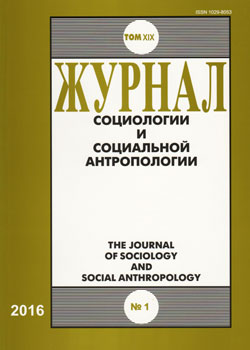Государственное управление принудительной миграцией как способ освоения Севера России в 1930-1950-е гг.
Ключевые слова:
Аннотация
The article presents the authors’ analysis of forced migration in the Soviet period of colonization of the North from the 1930s until the mid-1950s on the example of the Komi Republic. The analysis draws on the sources that contribute to the reconstruction of the Soviet past in the period of Stalinist repressions. The basic thesis is that the forced migration, although it played a crucial role in the formation of the Soviet economy, had unclear consequences for contemporary Russia. The implementation of government priorities in the North development had been carried out without taking into account the interests of the sending / receiving parties, settlement opportunities for people and the creation of basic social conditions for work and life of forced migrants. The authors confirmed the conclusions of previous researchers: the nature and intensity of migration depended on state intervention. However, the movement of forced labor in the Komi Republic was unstable and constantly changing, indicating the existing contradictions, «failures» and inconsistency of central planning policy. At the same time it is proved that using cheap labor of repressed and forcibly displaced people, the Soviet state was trapped in an extensive organization of production based on forced labor that necessarily involves the regular requests for labor in exchange for the implementation of state plans. It is during this period, that the foundations of the negotiating character of relations between «Center» and «Region», leading to the «anarchy of production» and inefficient economy, were laid down. Indeed, the use of forced labor determined the economic development in the Komi Republic. The Republic became an ideal region for the supply of natural resources for the country, but at the same time its raw materials appendage. The Komi Republic, as a subject of the Russian state, has not received an opportunity to formulate its own priorities in the regional development. Moreover, despite the fact that using the methods of state mobilization of territorial development was painful for both forced migrants and local residents, the contribution of local residents remains undervalued. In modern period it has led to a distortion of social relations, the lack of articulation and promotion of Komi residents’ common interests. Finally, forced migration and massive Stalinist repressions formed the basis for the formation of Russia’s aggressive image.
Опубликован
2016-02-20
Как цитировать
Лыткина, Т., & Фаузер. (2016). Государственное управление принудительной миграцией как способ освоения Севера России в 1930-1950-е гг . ЖУРНАЛ СОЦИОЛОГИИ И СОЦИАЛЬНОЙ АНТРОПОЛОГИИ, 19(1), 90–109. извлечено от http://jourssa.ru/jourssa/article/view/459
Раздел
Социология миграции

